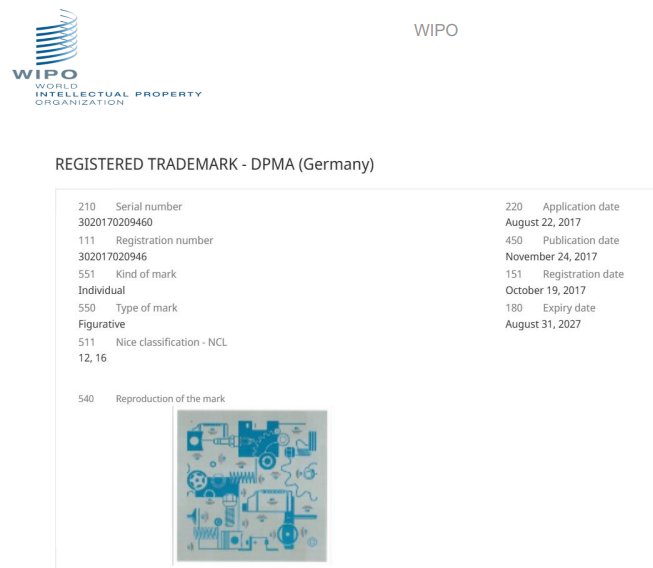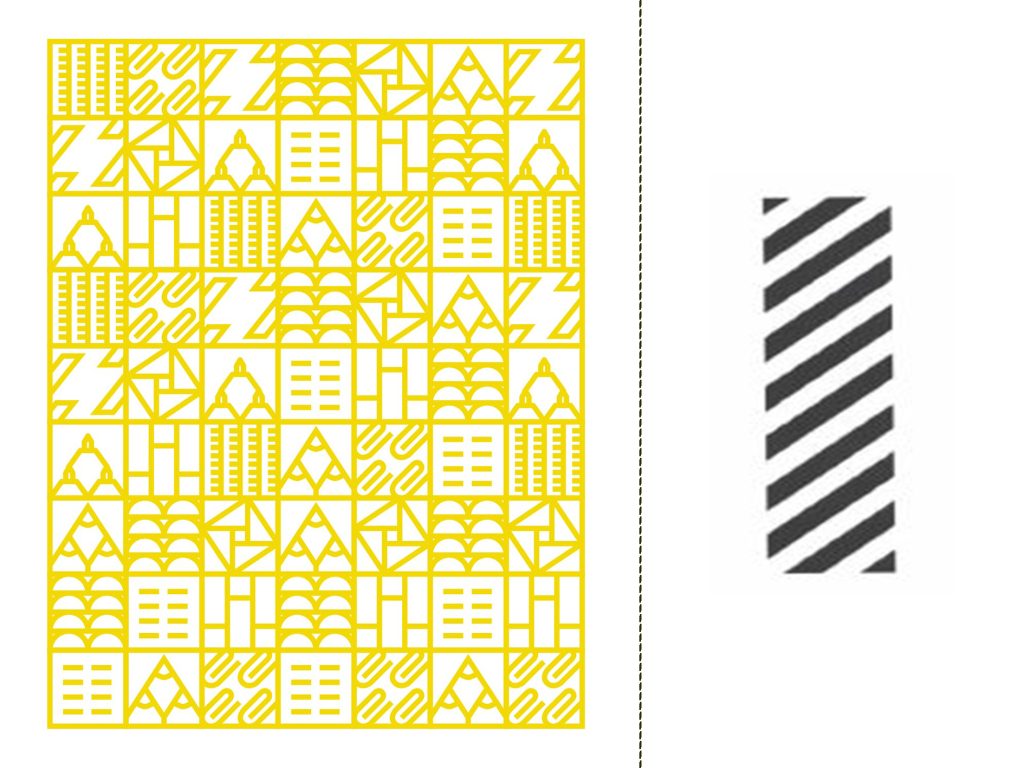The purpose of a trademark is to provide clear distinctions about the quality of goods or services associated to it. As such, a trademark in itself must be distinctive so that potential consumers can easily identify it. Business owners go to great lengths in creating an original trademark that meet all the aforementioned criteria. Nevertheless, there are instances in which an examiner’s perspective may vary on the registrability of a trademark. One such example is the case of a Mercedes-Benz Group AG’s trademark. In the initial filing, the examiner found the trademark to be unregistrable in class 16 and rejected the trademark. Fast forward to a few months ago, the Trademark Appeal Commission finally issued a decision that signified an end to a six-year struggle in registering the trademark in Indonesia.

(Registration Number: IDM001212102)
The Problem of Distinctiveness
On February 2018, LSP PARTNERSHIP filed two applications to register a logo trademark in two different classes in the name of Mercedes-Benz AG. One application was for class 12 and another was for class 16. The applications were filed by claiming priority, as the trademark was firstly filed in Germany one year before. The registration process then took an interesting turn in November 2018 when the examiner issued a provisional refusal to the class 16 application. The basis of this refusal is Article 20(e) of Law No. 20/2016 concerning Marks and Geographical Indications. The law states that a Mark is unregistrable if it is devoid of any distinctive character (non-distinctive). The elucidation part elaborates that non-distinctive is if the sign is too simple such as line or full stop. In addition, the sign must not be too complex as well that it is not clear.
The First Refusal
It is important to note that the Trademark Office of Germany already registered the trademark for both classes prior to the issuance of the provisional refusal.

Due to this fact, LSP PARTNERSHIP filed a response to the provisional refusal. The main argument is that the frequent appearance of “Mercedes-Benz StarParts” in the trademark should be a clear indicator of its distinctiveness. The words are figurative elements in the form of different type of spare parts. On top of that, the trademark employs specific colors, blue and phwhite. The combination and arrangement of elements shall provide unique visual appearance of the trademark. The examiner, however, held the view that those elements are not distinctive enough and gave a final refusal.
Unsuccessful Trademark Appeal
To challenge the provisional refusal, LSP PARTNERSHIP filed an appeal on behalf Mercedes-Benz AG. In addition to emphasizing the distinctive features of the trademark, the appeal also compared it to two different trademarks. One of the trademarks can easily be perceived to be too simple while another too complicated but both were able to obtain protection.

There is no method to measure a complexity of a trademark, so subjectivity plays a role in the examination process. However, if a combination of simple shapes and a mere stripe can be registered, there is no reason to believe that the StarParts logo cannot be registered. In fact, before the appeal was filed, the Trademark Office has granted the registration of the exact same trademark in class 12. Finally, the Trademark Appeal Commission issued a decision to refuse the appeal petition. The panel insisted that the trademark does not have distinctive features.
New Application, Old Repercussion
In September 2022, LSP PARTNERSHIP represented Mercedes-Benz Group AG to file a new application for the same trademark. This time around, the examiner also issued a provisional refusal for the application. The reason was that there is a discrepancy between the trademark’s name and its image representation. In November 2023 LSP PARTNERSHIP filed a response to the provisional refusal to explain whether the trademark protection is requested for the name or for the image. Ten days after that, however, the Trademark Office still issued a notification of final refusal. The Trademark Office perceived the trademark as complicated and contains elements that may mislead the general public.
Final Trademark Appeal & Inherent Distinctiveness
To overcome the ruling of the Trademark Office, LSP PARTNERSHIP filed an appeal to the Trademark Appeal Commission in March 2024. The main argument was that the applicant chose and organized the colors (blue and white) and the images of spare parts thoughtfully. The placement of each element creates an entirely unique image which highlights the distinctiveness of the trademark. Furthermore, the issue of distinctiveness did not make sense because in July 2020 the Trademark Office granted the registration of the trademark in class 12. Not to mention that the Trademark Offices in several other countries also granted the registration of the trademark.
The panel of Trademark Appeal Commission this time agreed with the arguments presented. First and foremost, the panel concurred that the arrangement of words, colors, and images in the trademark is done in an orderly manner. This suggests that the trademark possesses an inherent distinctiveness and will not mislead the general public in the course of trades. Secondly, the panel confirmed the registration of the same trademark in class 12. This further proves the inherent distinctiveness of the trademark. As a result, the panel granted the petition. The Trademark Office, in turn, registered the trademark on September 11, 2024.
Conclusion
Every trademark application has to go through substantive examination stage. Examiners can only allow a registration of a trademark if it is distinctive. Without citing any similar trademarks, examiners may refuse to register a trademark if the trademark is inherently indistinctive. This judgment, however, may differ from one examiner to another. Therefore, if an examiner issues a final refusal notification, it is always the best approach to file an appeal. It gives a few more perspective on the trademark, because the trademark will be examined by a panel not just by one officer. LSP PARTNERSHIP is adept in preparing solid and sound arguments to direct the panel to see the inherent distinctiveness of a trademark. Filing a trademark in multiple classes through multiple applications is also helpful. It increases the chance of registration because different examiners will be assigned to the different applications. Just one registration is enough to show that the trademark is inherently distinctive.






